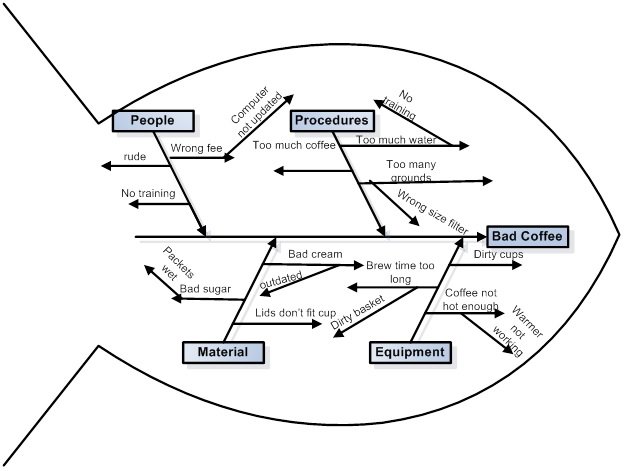In the terrain of quality control and process improvement, curves unfold like hills and valleys, revealing insights into the variability of data. Imagine it as a journey through rolling landscapes, encountering both gentle slopes and sharp peaks. Let’s embark on a quest to understand the significance of Skewed and Bimodal Curves in the pursuit of quality excellence.
Curves as Maps: The Essence of Visualization
Curves serve as maps guiding us through the topography of data distribution. Skewed and Bimodal Curves are distinctive features on this map, akin to hills and valleys highlighting the variability in our processes. Visualization becomes our compass, allowing us to navigate through the nuances of quality control.
Skewed Curves: The Art of Asymmetry
Skewed Curves are like rolling hills, not perfectly symmetrical but leaning towards one side. Picture a landscape where the majority of trees stand on one slope. Similarly, skewed curves signify that most data points cluster on one side, revealing an asymmetry in the distribution. Understanding this tilt is crucial for deciphering patterns and making informed decisions.
The Quality Control Landscape: Unveiling Skewed Curves
In the landscape of quality control, Skewed Curves are the hills that rise gracefully. They indicate that most observations gravitate towards one end, showcasing a dominant trend. This asymmetry suggests that the majority of processes or products fall within a specific range, helping organizations focus their improvement efforts where they matter most.
Positive and Negative Skewness: The Slope Direction
Skewed Curves can lean in different directions, either positively or negatively. Positive skewness resembles a hill rising to the right, indicating that the tail on the right side is longer. Conversely, negative skewness forms a hill rising to the left, suggesting a longer tail on the left side. These variations in slope direction provide nuanced insights into the nature of data distribution.
Implications of Skewed Curves: The Story They Tell
Skewed Curves tell a story about our processes. A positively skewed curve may signify that many observations cluster towards higher values, potentially indicating an area of strength. On the flip side, a negatively skewed curve may reveal a concentration of data towards lower values, suggesting a potential area for improvement. Understanding these implications is pivotal for targeted action.
The Dance of Data: Bimodal Curves
In the dance of data, Bimodal Curves emerge as valleys between hills. Unlike the gentle slopes of skewed curves, bimodal distributions resemble two distinct hills, signifying the presence of two different modes or patterns within the data. It’s like encountering two peaks in a mountain range, each representing a unique aspect of the process.
Identifying Bimodal Patterns: The Peaks in Data
Bimodal Curves unveil themselves as distinct peaks on the quality control landscape. Imagine a valley between two hills where a river flows, separating two distinct ecosystems. Similarly, bimodal distributions highlight two sets of observations with different characteristics. Identifying these patterns is crucial for understanding the dual nature of the process.
Implications of Bimodal Curves: The Dual Narratives
Bimodal Curves narrate a dual story within our processes. Each peak represents a different mode or behavior, suggesting that our system might be operating in two distinct states. Understanding the implications of these dual narratives is essential for targeted interventions. It’s like managing two different species in a nature reserve – each requiring specific care and attention.
Quality Improvement Expedition: Navigating the Curves
As we embark on a quality improvement expedition, navigating through Skewed and Bimodal Curves becomes our compass. Like seasoned explorers, we analyze these curves to uncover hidden insights, paving the way for targeted and effective interventions.
Root Cause Analysis: Unearthing the Source

Skewed and Bimodal Curves are crucial indicators in the quest for root causes. A skewed curve may guide us towards a concentrated area of strength or weakness, while a bimodal curve may reveal dual sources affecting the process. It’s like archaeologists uncovering artifacts – these curves lead us to the source of variability.
Targeted Interventions: Precision in Improvement
Understanding the landscape of Skewed and Bimodal Curves guides us in crafting precise interventions. It’s like a surgeon using a scalpel instead of a sledgehammer. By focusing efforts where they matter most, organizations can maximize the impact of their interventions, ensuring that improvement strategies align with the unique characteristics of their processes.
Pitfalls in the Expedition: Navigating Challenges
Even in the quality improvement expedition, pitfalls may emerge. Navigating these challenges is essential to maintaining the rhythm and ensuring that the insights derived from Skewed and Bimodal Curves contribute effectively to the pursuit of excellence.
Misinterpretation: Reading the Landscape Wrong
One common pitfall is misinterpreting the landscape. Just as an explorer may misread the signs of a terrain, misinterpreting Skewed and Bimodal Curves can lead to misguided interventions. Organizations should invest time in understanding the nuances of these curves, avoiding hasty judgments that may steer improvement efforts in the wrong direction.
Lack of Continuous Monitoring: Losing Sight of the Horizon
Another pitfall is the lack of continuous monitoring. Quality improvement is an ongoing expedition, and neglecting to monitor the landscape regularly is akin to losing sight of the horizon. Organizations should integrate continuous monitoring practices to ensure that insights from curves remain relevant and guide the journey toward sustained excellence.
Conclusion: The Expedition Continues
In the grand expedition of quality control and process improvement, Skewed and Bimodal Curves are our companions. They guide us through the rolling hills and valleys of data distribution, providing insights that shape our interventions. Armed with the knowledge of these curves, organizations can continue their journey toward perfection in the ever-evolving world of quality control.